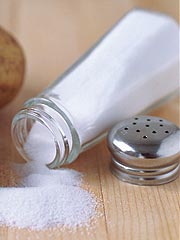 With graduation season quickly approaching and Mother’s Day just around the corner, it’s a good time to reflect on things you’ve learned from your mother – or even from her mother and her mother’s mother. I’m sure you can remember familiar phrases that our parents have shared with us. Old proverbs such as, “two wrongs don’t make a right,” “the early bird gets the worm,” “don’t bite the hand that feeds you,” and numerous others have remained in the common vernacular for decades. Now, you may be asking what these phrases have to do with food and, most importantly, how can good advice be poisonous? Well, “keep your shirt on,” I’ll tell you.
With graduation season quickly approaching and Mother’s Day just around the corner, it’s a good time to reflect on things you’ve learned from your mother – or even from her mother and her mother’s mother. I’m sure you can remember familiar phrases that our parents have shared with us. Old proverbs such as, “two wrongs don’t make a right,” “the early bird gets the worm,” “don’t bite the hand that feeds you,” and numerous others have remained in the common vernacular for decades. Now, you may be asking what these phrases have to do with food and, most importantly, how can good advice be poisonous? Well, “keep your shirt on,” I’ll tell you.
The old proverb, “It never rains, but it pours” was revamped to “when it rains, it pours” by the Morton Salt Company to market their free-flowing salt product. While we typically use the phrase to indicate something bad happening all at once, their usage was to market salt that did not clump during inclement weather or in humid conditions. How were they able to do this? Anti-caking agents, of course.
No, these are not a group of top secret agents hired to come bash in your cake mid-baking, they are compounds used to prevent clumping and sticking in packaged products. You may remember the recent incident of wood pulp being found in cheese? Cellulose – which is sometimes, but not always made from wood pulp – is a common anti-caking agent. The reason for concern was due to findings that showed more cellulose than actual cheese was present in a certain product.
Other common anti-caking agents include: silicon dioxide, calcium silicate, iron ammonium citrate, and yellow prussiate of soda. Several anti-caking agents have been cause for concern recently because of their name. Sodium and Potassium ferrocyanide are feared because the chemical compound contains cyanide, a known toxin and common Hollywood poison of choice. However, the same could be said about regular table salt. Chlorine (a toxin) + sodium (a toxin) = sodium chloride = salt. In acidic environments, the bonds of sodium chloride and ferrocyanide can break, but stomach acid is not strong enough for these reactions to take place. Aluminum, used in anti-caking agents, is another concern. However, “In healthy individuals only 0.3% of orally ingested aluminum is absorbed in the GI tract.” It should be noted that in individuals with impaired renal function, ingested aluminum is cause for concern. Improper excretion of aluminum can lead to deposits in the brain, bone, liver, heart, spleen, and muscle. Additionally, aluminum absorbed intravenously has the potential to remain in the body. Excess aluminum has been linked to neurological conditions, certain types of anemia, kidney failure, and the softening of bones.
There are natural alternatives to chemical anti-caking agents such as talc, and grains such as rice. Talc has naturally occurring asbestos that has been labeled as a carcinogen if inhaled. Fortunately, the talc used in the U.S has been asbestos-free for many years. More research needs to be conducted, but asbestos-free talc, when used as a body powder, is also a possible carcinogen. Another option would be to put grains in products to absorb the moisture that causes caking. I’m sure you’ve seen a salt shaker and wondered, “What is that? Is there a maggot in there?” Then, upon further review, you realize it is a grain of rice and think, “Wow, I’m paranoid” … or is that just me? Other grains can be used, but if that grain is wheat or a wheat hybrid you are introducing a new allergen to the product.
As with many food additives, the FDA has labeled them generally recognized as safe (GRAS) if present below a certain threshold. It might be wise to consider how many items you eat in a day that contain anti-caking agents. New research studying the nanoparticles in our food supply may prove that anti-caking agents are more harmful than previously thought, but the current research doesn’t provide clear evidence that these agents are poisonous. Of course, if you reduce the amount of processed food you eat, shred your own cheese, and put rice/grains in packaged goods you’ll have nothing to worry about. That is until we find out the newest thing that’s going to kill us. Then again, “worrying gives a small thing a big shadow.”
References
Bernardo, J., MD, MPH, Edwards, M., MPH, & Barnett, B. MD. (2015). Aluminum toxicity. Mescape. Retrieved from http://emedicine.medscape.com/article/165315-overview
United States Food and Drug Administration (2016). Code of Federal Regulations Title 21. Retrieved from https://www.accessdata.fda.gov/scripts/cdrh/cfdocs/cfcfr/CFRSearch.cfm?fr=172.480



